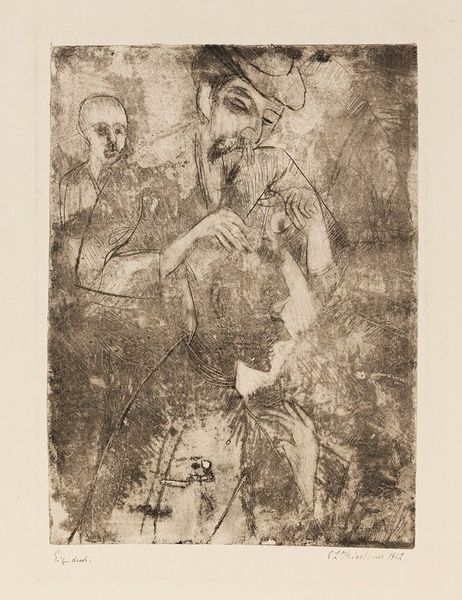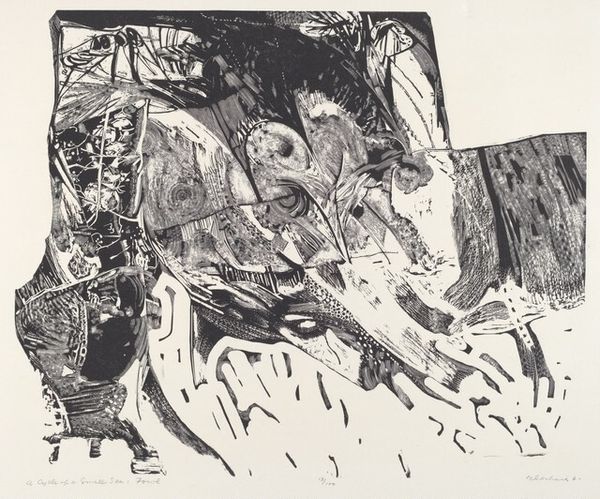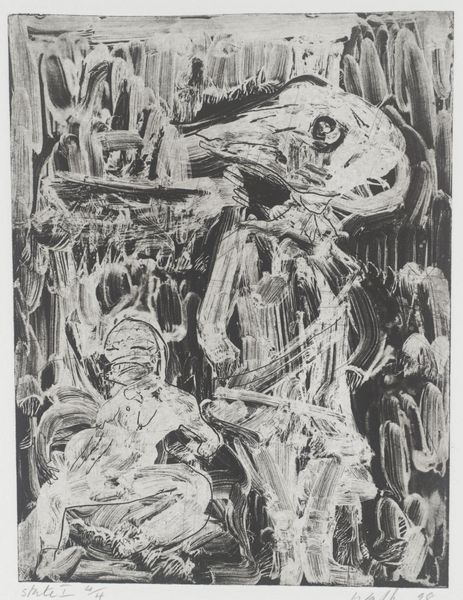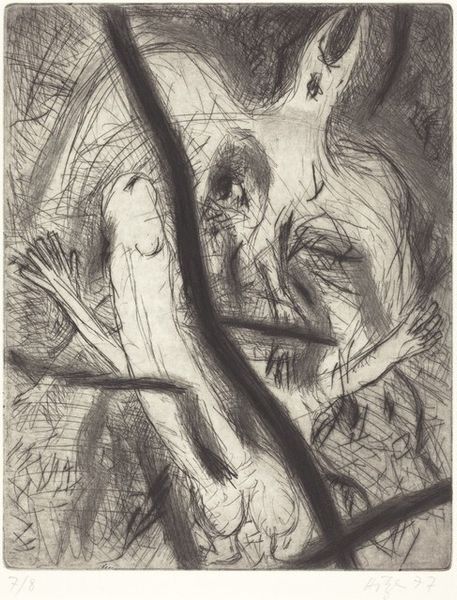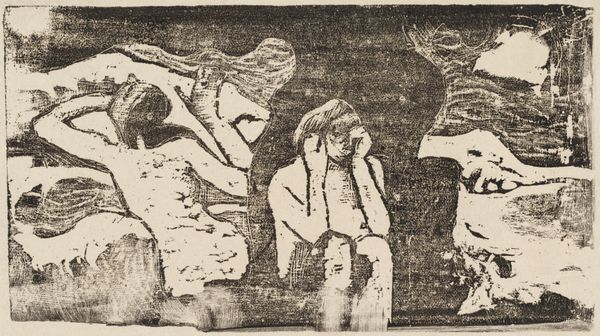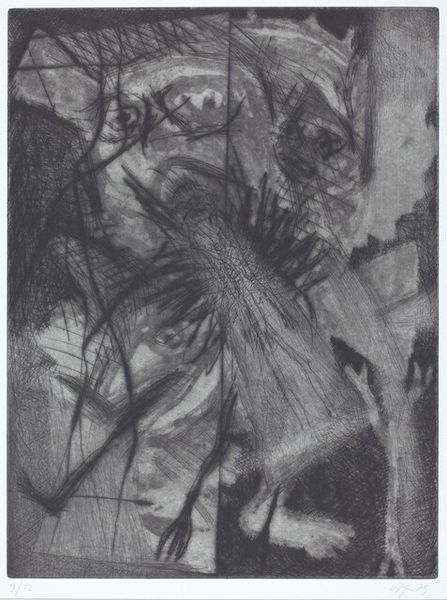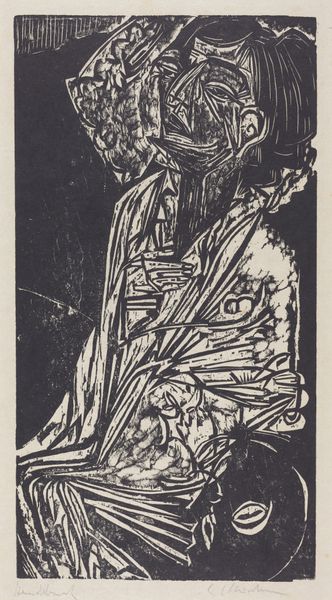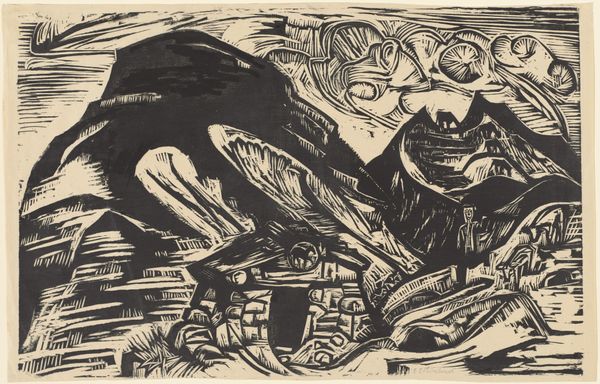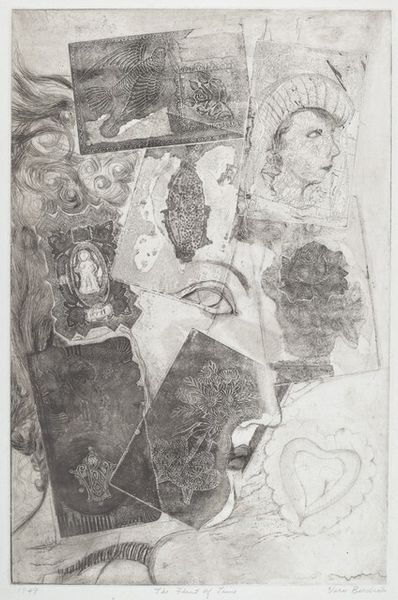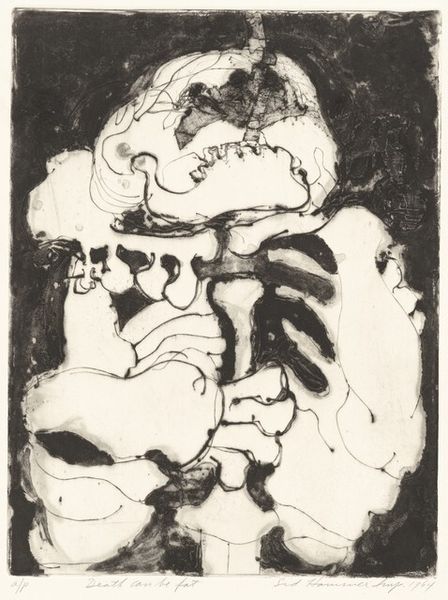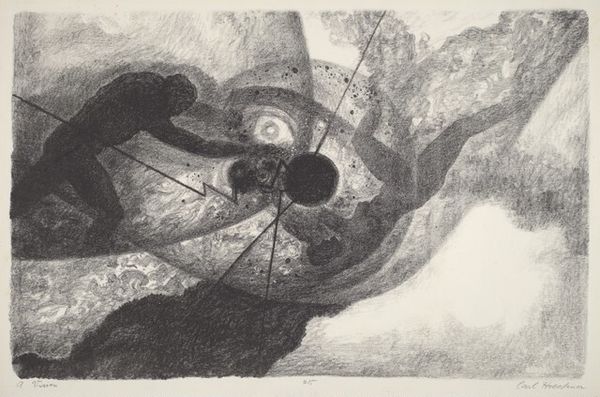
Copyright: National Gallery of Art: CC0 1.0
Editor: This is Imre Reiner's "Illustration to Hesiod," created in 1949 using ink and etching techniques. There's a disquieting feeling, a surreal almost nightmarish quality to the forms. The human figure looks ravaged. What strikes you when you look at this piece? Curator: It’s crucial to understand the post-war context of this image. Created just after World War II, it's reasonable to read the figures through the lens of the collective trauma and social upheaval of the time. Reiner, working in Switzerland after fleeing Nazi Germany, was undoubtedly processing this era. Does that inform how you see the damaged figure? Editor: Yes, definitely. That understanding reframes the whole piece. The etching seems less abstract and more of a direct reaction to a period of suffering. Curator: Consider the role of illustration itself. These weren't just decorations, but visual interpretations meant to deepen public understanding and engagement with Hesiod's text. Think about who would have been viewing this; what anxieties might they have brought to the image? Editor: So the illustration becomes a shared space where anxieties about survival and social collapse are processed alongside the myth? I am also seeing symbolist elements, with figures acting as a mirror reflecting broader existential concerns. Curator: Precisely! And think about the act of illustrating ancient texts. It positions contemporary anxieties within a historical continuum, suggesting that these struggles are somehow universal and perpetually relevant. It suggests art's unique contribution to cultural memory. Editor: I had never thought about the public and the purpose of these illustrations! It all comes together in this intense visualization. Curator: Seeing it in this context helps unlock the layers of meaning Reiner embedded within it.
Comments
No comments
Be the first to comment and join the conversation on the ultimate creative platform.
